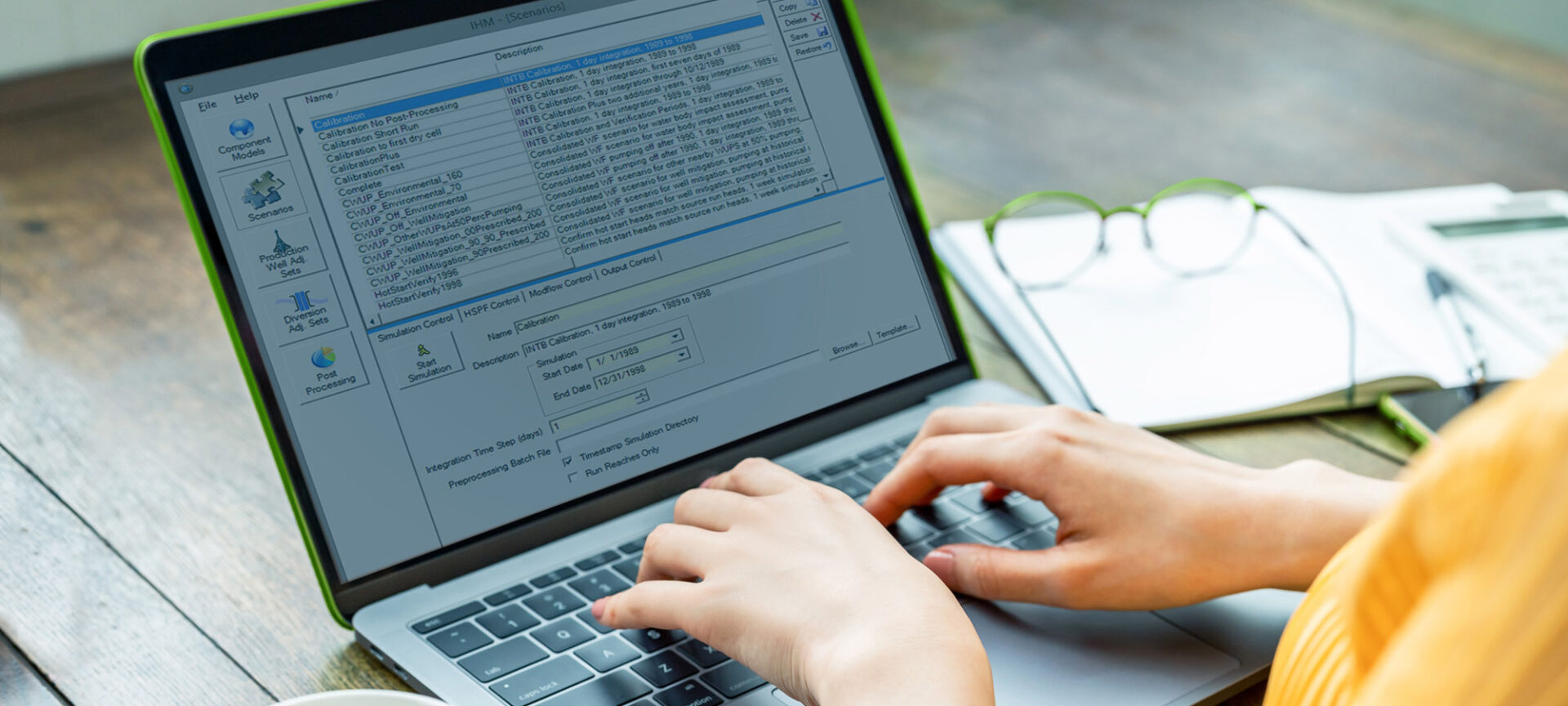You are using an outdated browser. Please upgrade your browser to improve your experience.
IHM User Interface
Introduction to the IHM User Interface
This video demonstrates how to launch and load the IHM User Interface (UI). Introduces functionality of the six IHM UI Views. Additional functionality details are provided for the four tabs of the Scenarios View. Provides tips for effective use of the UI.
IHM Scenario Configuration & Launch
This video demonstrates how to add, configure, and launch an IHM simulation scenario using the IHM User Interface (UI). Only the Copy option is demonstrated to add a new simulation scenario (“Add” option can also be used). All inputs to the UI are stored in the IHM input database. The video also introduces the simulation OutputDirectory and content within the IHM.log file.
IHM Postprocessing
IHM Summary Postprocessing
This video demonstrates postprocessing capabilities of IHMsummary. Features of the video include how to configure postprocessing steps, how to configure an observed well set (i.e., subset of observed wells), and how to execute the configured postprocessing steps. Output file organization is also described. All configuration inputs to the user interface are stored in the IHM input database to facilitate repeated uses.
IHM BinaryReader Postprocessing
This video demonstrates postprocessing capabilities of IHMbinaryreader which reads and processes binary files containing simulated groundwater results by model grid cell and layer. Features of the video include a description of input configuration options, how to configure postprocessing steps, and how to execute the configured postprocessing steps. Output file organization is also described. All configuration inputs to the user interface are stored in the IHM input database to facilitate repeated uses.
Extra Action for IHM BinaryReader Postprocessing
This video demonstrates Extra Action postprocessing capabilities within IHMbinaryreader. The Extra Action feature allows user-customized codes or scripts, that read output from IHMbinaryreader, to create supplemental postprocessed output. This video focuses on how to create shapefiles using the Extra Action feature. Video elements include an overview of Extra Action, general input configuration, specific input configuration for the MakeShapefile utility that creates shapefiles using Extra Action, how to execute IHMbinaryreader with Extra Action, and output file organization when using the MakeShapefile utility. All configuration inputs to the user interface for Extra Action are stored in the IHM input database to facilitate repeated uses.
IHM Balance Postprocessing Part 1 of 2
This video demonstrates postprocessing capabilities of IHMbalance which reads and processes simulated results for a simulation scenario to produce water balance results for four input dimensions including: (1) Simulation Scenario, (2) Spatial Domain, (3) Control Volume, and (4) Temporal Span. The user provides or selects inputs for the four dimensions to customize balance output based on need. Features of this video describe the four input dimensions, balance attributes exclusive to the IHM, differences between component and uniform fluxes, operation options, data sources, and output. This video is part one of a two-part video series which summarizes postprocessing capabilities and usage of the IHMbalance.
IHM Balance Postprocessing Part 2 of 2
This video demonstrates postprocessing capabilities of IHMbalance which reads and processes simulated results for a simulation scenario to produce water balance results. Using the IHMbalance user interface, the video demonstrates how to open the interface, define balance spatial domains, and develop and execute a balance configuration. Also, the video describes organization and content of balance output folders and files and describes examples of flux and volume balance output.
IHM Input Database
Introduction to the IHM Input Database Part 1
This video introduces resources, design and datasheet view for tables, properties for tables, and referential integrity.
Introduction to the IHM Input Database Part 2
Expands information in Part 1 on referential integrity and, introduces queries and frequently used tables.
Introduction to the IHM Input Database Part 3
Reinforces the concepts presented in Parts 1 and 2 by demonstrating them within an IHM input database.
Calibrated Model Applications Using the Integrated Hydrologic Model Code
Webinar: Introduction to the Integrated Northern Tampa Bay Model
This webinar presents the motivation, development, and application examples of the Integrated Northern Tampa Bay (INTB) Model. The INTB model is a calibrated application of the Integrated Hydrologic Model (IHM) simulation code. The INTB model is used to support water supply planning and management, establishment and assessment of minimum flows and levels, and evaluation of changes to flows and levels resulting from changes in water extraction, landuse, and climate. Tampa Bay Water and the Southwest Florida Water Management District partnered to develop the INTB model which covers 4,000 square miles in west-central Florida.
Read the Webinar Q&A 
